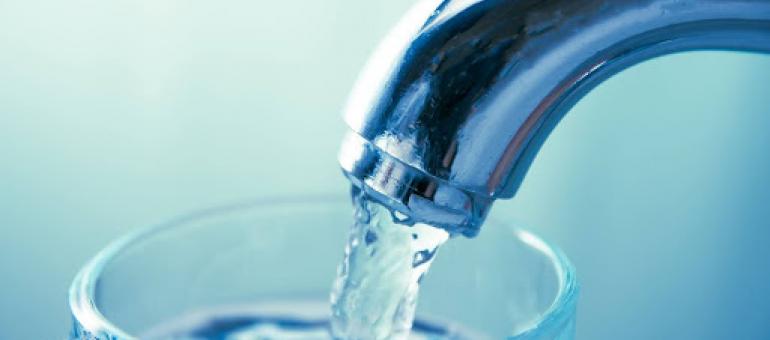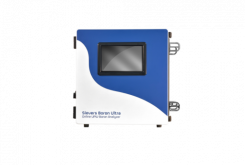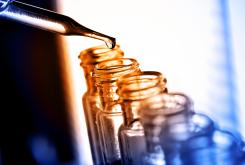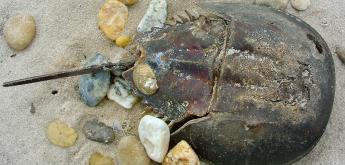What is Total Organic Carbon?

Water is the lifeblood of humanity, and we often take it for granted that it’s clean and pure enough to drink. Within what appears to be that clear glass of water may be a hidden world of organic compounds.
But water isn’t just a drinkable resource — it is a core component of manufacturing for many products, and the purity of the water impacts the quality and safety of those products. For example, life-saving medications use water as an ingredient and require testing to control contamination. In semiconductor manufacturing, even the smallest contaminants can wreak havoc on a production line, leading chipmakers to use ultrapure water to keep silicon wafers clean during fabrication.
Total organic carbon (TOC) measures organic compounds in a water sample. Measuring TOC identifies all the visible and invisible organic compounds dissolved in water, including municipal water, wastewater, and water used to manufacture pharmaceuticals, food and beverage products, and semiconductors. By tracking these compounds from source water to final consumption, TOC detection protects what matters most: People, products, and the planet.
Let’s dig deeper into the sources of TOC, how to analyze it, why it’s important, and the cutting-edge technology Veolia | Water Tech offers for TOC analysis.
Where does TOC come from?
TOC has diverse origins spanning natural and industrial sources. Organic materials in the environment end up in water systems, whether untreated wastewater in a river or oil seeping into groundwater. Certain industrial processes contribute to TOC levels by releasing dyes, solvents, allergens, and polluted condensate into water supplies. Manufacturing personal care products and pharmaceuticals also contributes to TOC when manufacturing processes wash off cosmetics, cleaning detergents, medications, and pharmaceutical compounds.
Water treatment processes also generate organic compounds — microorganisms and bacteria, particularly when breaking down organic matter, affect TOC levels. With such a wide range of origins, TOC testing helps connect the dots on quality issues in water used for production across various industries.
TOC analysis shows what's dissolved beneath the surface as these organic compounds enter the water supply. By identifying TOC sources, you can pinpoint risks, optimize treatment methods, and safeguard the water supply.
TOC analysis methods and techniques
Calculating the difference between total and inorganic carbon within a sample is the formula for determining TOC. Organic carbon is oxidized by analytical tools and converted to carbon dioxide (CO2). After oxidation, the resulting CO2 can be detected by the tools.
Different analysis methods have their strengths and suitabilities depending on specific applications. Membrane Conductometric Detection is an excellent choice for TOC analysis due to its robust capabilities in measuring CO2 and minimizing interferences. Non-Dispersive Infrared (NDIR) detection measures the absorption of infrared light by CO2. In this method, water vapor can interfere with the accuracy and sensitivity of the analysis. A third method, Direct Conductivity, measures the conductivity of the sample before and after oxidation but is more of a sensor than a true analyzer because it often has interferences.
When accuracy and precision are non-negotiable, Membrane Conductometric technology provides the most reliable TOC analysis results, free from interferences. This allows users to assess water quality and control processes confidently.
Why is TOC testing important?
TOC testing is critical for many reasons, including water quality assessment, environmental monitoring, regulatory compliance, process control, and process optimization. Organics monitoring goes beyond testing individual samples for quality control to serve crucial process control and asset protection functions.
Stringent regulations often mandate TOC monitoring to maintain contaminant compliance, enabling facilities to avoid fines. The data also allows process engineers to spot inconsistencies, adapt methods, and optimize efficiency for smooth operations. Additionally, checking TOC levels applies critical controls on wastewater effluents before discharge to prevent polluting downstream ecosystems.
In industries where water purity affects product quality, such as pharmaceutical, semiconductor, and personal care product manufacturing, TOC monitoring ensures water sources uphold the purity standards for final product integrity and performance. Without tight TOC controls, water inconsistencies could threaten the quality of end products. While regulatory compliance is a key driver for TOC analysis in pharmaceutical, medical devices, and other healthcare applications, it is accompanied by efficiency gains and benefits achieved from TOC as a process analytical technology (PAT).
What’s more, abnormal TOC spikes can rapidly expose upsets in treatment or production processes, requiring swift action to resolve contamination events or failing equipment. TOC serves as a facility's early warning system, compelling responses to issues before they escalate. In these ways, comprehensive TOC analysis helps deliver regulatory, quality, sustainability, and risk mitigation benefits for water-dependent facilities.
How Veolia solves water quality and process monitoring challenges with TOC
TOC monitoring enables excellence in diverse industries because of its impact on decision-making and resource management related to water quality, process control, environmental protection, and regulatory compliance. Veolia has a range of offerings in its Sievers TOC analyzers and instruments.
In municipal uses, TOC is an important water quality parameter for drinking water plants due to its link to disinfection byproducts (DBPs). Sievers TOC analyzers include models specifically engineered to support disinfection byproduct compliance, like the M5310 C TOC Analyzers.
Semiconductor manufacturers require stability and low-level accuracy when monitoring water for contaminants due to the sensitive nature of their products. TOC monitoring with Sievers analyzers can ensure water quality and deliver reliable data to prevent undetected organics and protect products. The M500e Online and M9e models are used for semiconductor applications to detect critical contaminants, optimize yield, and ensure ultrapure water quality.
Pharmaceutical manufacturers rely on TOC and conductivity monitoring to meet compliance requirements and improve efficiency as the drug development pipeline expands. Veolia offers several Sievers TOC models for pharmaceutical and life sciences uses and recently unveiled the Sievers Soleil Rapid Bioburden Analyzer to accompany its TOC and endotoxin testing solutions. The Soleil provides near real-time data to monitor the effectiveness of microbial control within ultrapure water and manufacturing processes, giving Veolia the industry's first comprehensive offering of microbial testing and contamination control.
TOC plays a vital role on the global stage and can be a powerful analytical tool across various industries and applications. Yet, it can be a challenge to implement a robust monitoring program on your own. Veolia is the partner that can understand even the most complex scenario and find the right TOC analyzer to fit your individual needs. Reach out to our experts today to learn more about our innovative solutions for TOC analysis.







